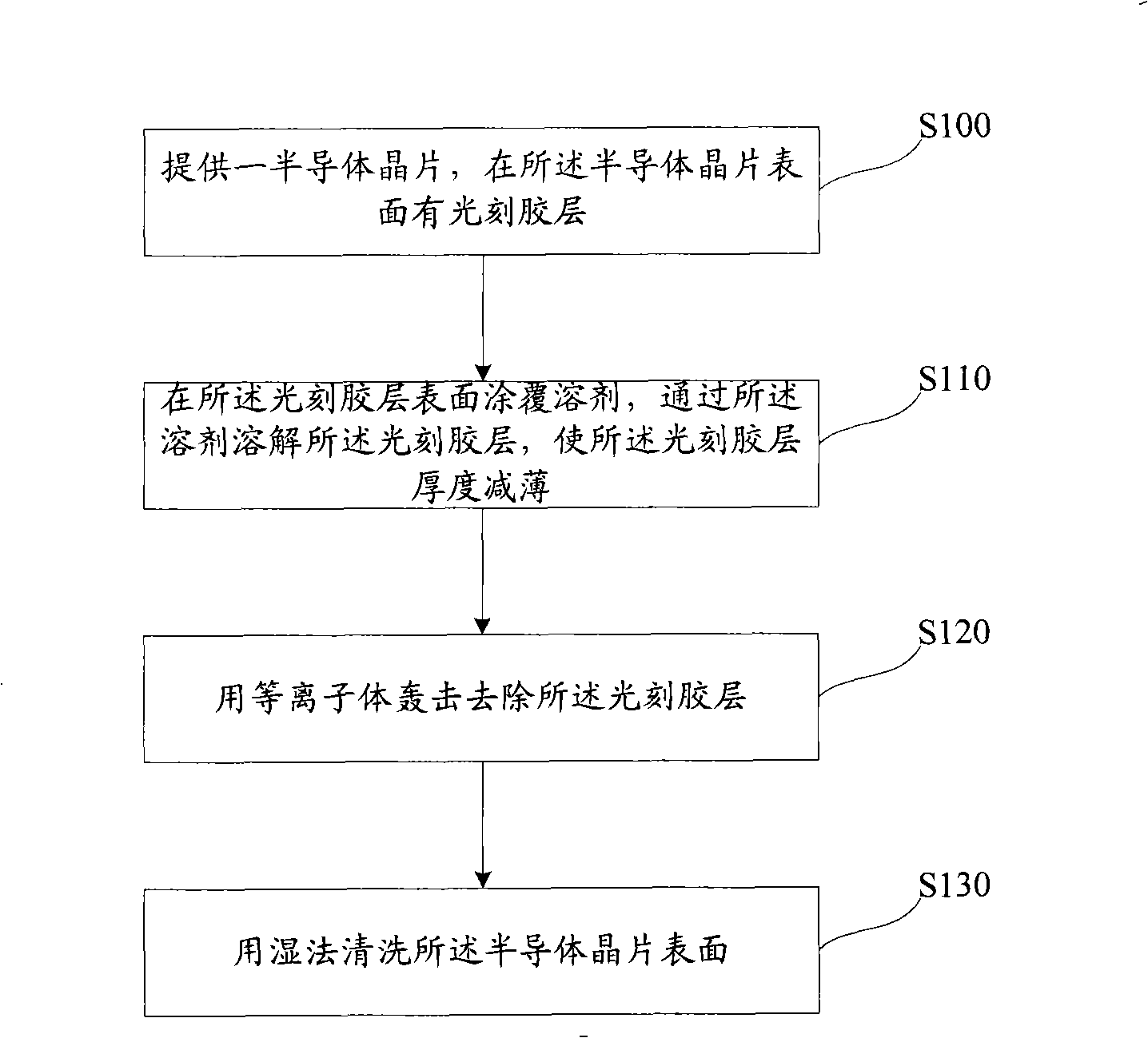Method for removing photoresist as well as method for reworking of photoetching technology
A technology of photoresist and photoresist layer, which is applied in the direction of photosensitive material processing, electrical components, semiconductor/solid-state device manufacturing, etc., can solve the problem of residual photoresist that cannot be removed from the surface of semiconductor wafers, etc., to achieve extended The effect of process time
- Summary
- Abstract
- Description
- Claims
- Application Information
AI Technical Summary
Problems solved by technology
Method used
Image
Examples
Embodiment Construction
[0034] The specific embodiments of the present invention will be described in detail below in conjunction with the accompanying drawings.
[0035] figure 1 It is a flowchart of an embodiment of the photoresist removal method of the present invention.
[0036] Such as figure 1As shown, in step 1, a semiconductor wafer is provided, and there is a photoresist layer on the surface of the semiconductor wafer (S100). The material of the semiconductor wafer may be one of single crystal silicon, polycrystalline silicon, amorphous silicon, gallium arsenide, and silicon germanium compound, and the semiconductor wafer may also include a silicon-on-insulator structure. The photoresist layer can be a photoresist layer to be removed after etching or ion implantation; it can also be a photoresist layer with a pattern after the photolithography process is completed. Finally, inspect the photoresist layer that needs to be removed with defect residues, or the photoresist layer that needs to ...
PUM
 Login to View More
Login to View More Abstract
Description
Claims
Application Information
 Login to View More
Login to View More - R&D
- Intellectual Property
- Life Sciences
- Materials
- Tech Scout
- Unparalleled Data Quality
- Higher Quality Content
- 60% Fewer Hallucinations
Browse by: Latest US Patents, China's latest patents, Technical Efficacy Thesaurus, Application Domain, Technology Topic, Popular Technical Reports.
© 2025 PatSnap. All rights reserved.Legal|Privacy policy|Modern Slavery Act Transparency Statement|Sitemap|About US| Contact US: help@patsnap.com


